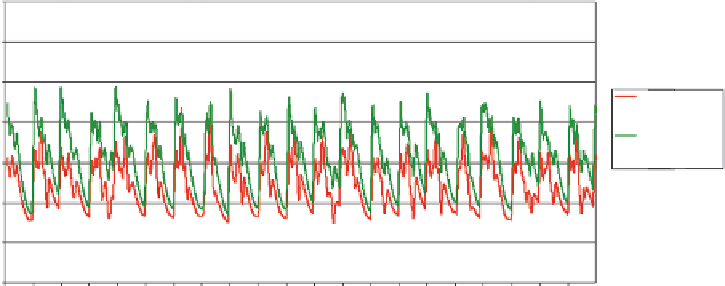Geoscience Reference
In-Depth Information
7
6
5
B2 2050
landuse
B2 current
landuse
4
3
2
1
0
Figure 11.3
Effect of incorporating CLUAM land-use distribution into INCA-N model.
and indirect socio-economic effects of climate change on diffuse pollution.
INCA-N, which requires data on organic and inorganic fertilizer application
rates, land-use distribution and climate as inputs, predicts
inter alia
daily
streamflow concentrations of NO
3
-N.
Incorporating the indirect effects of climate change on diffuse pollution in this
way can show significant effects on the predicted stream nitrate concentrations
from INCA-N. Figure 11.3 shows the stream nitrate concentration at the
downstream end of the Tamar catchment (Gunnislake Bridge) for the period
2040-60 under the IPCC B2 climate scenario using the current land use and the
land use for 2050 predicted by CLUAM. The CLUAM predicts that the area of
grassland and stock numbers in the catchment, particularly of dairy cattle, will be
reduced. However, the areas of non-farmed land and cereal land will be increased.
Coupled with a predicted reduction in the application of artificial fertilizers of
37% from the SRES projections, the net effect of these changes, as illustrated by
Fig. 11.3, is that average stream nitrate concentration will decrease but still
remain very high compared with undisturbed conditions.
The use of economic valuation as a tool for decision making
In some regions of the world, water will be an increasingly scarce commodity as
precipitation falls and temperature rises. The value of water, however, is not
simple to assess, owing to its nature as a 'public good'. Here we explain how the
total economic value (TEV) of changes in the quantity and quality of water can be
estimated. Such an assessment is integral to the design of economic incentives and
institutional arrangements to ensure wise allocation of resources and sustainable
management, now and in the future as the impact of climate change increases.
The issues involved are illustrated by presenting a case study for the Cheimatitida





























Search WWH ::

Custom Search